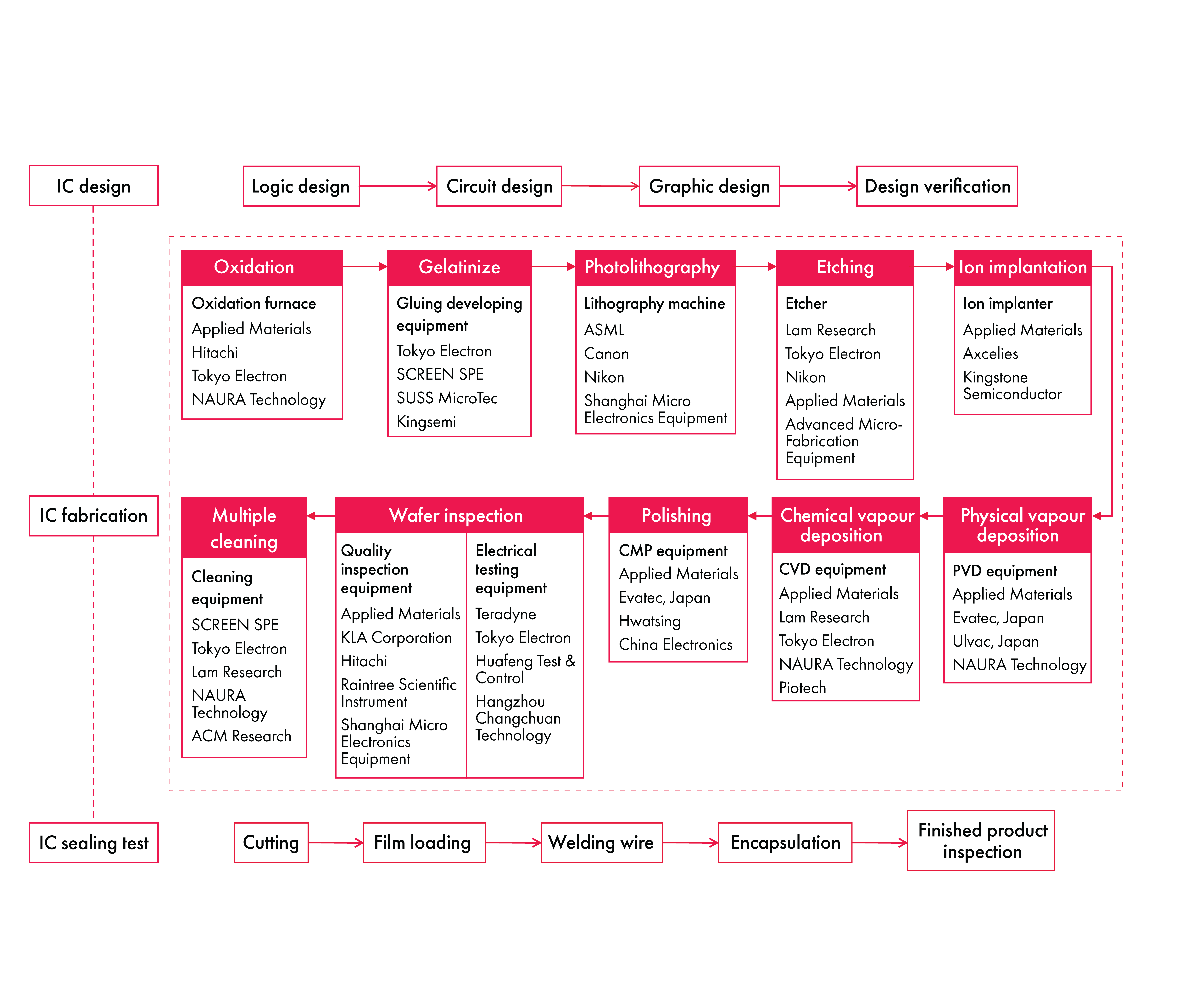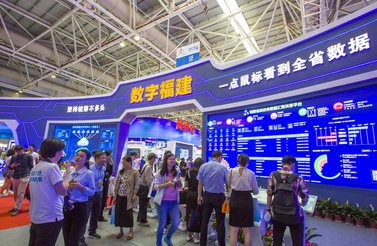New approaches are required to strengthen global cooperation on the governance of new technologies, including artificial intelligence (AI) and big data. It is time to take a closer look at the governance of relevant supply chains1 that shape industry-specific patterns of competition. Supply chain regulation faces a challenge of as yet unknown proportions — the deepening entanglement of geopolitics with trade and innovation policies.
I wrote this paper for one simple reason — to establish a fundamental distinction between managing supply chains to improve resilience2 and weaponizing supply chains to hinder geopolitical rivals. I believe the former is absolutely necessary to create the scarce public goods needed to fight the pandemic, climate change and unbearable inequality. However, when geopolitics rather than economics becomes the primary objective, I am concerned that this may disrupt the global innovation system. Driven by the US-China confrontation, supply chain regulation is now increasingly subordinated to national security considerations.3
I suggest an alternative research agenda. We need research on strategies and policies to improve supply chain resilience that would be robust enough to survive the onslaught of economic nationalism in the United States and China, as well as in Europe, Japan and the rest of Asia. Instead of each country trying to become self-sufficient through zero-sum competition and beggar-thy-neighbour policies, a better way to deal with supply chain vulnerabilities would be to negotiate international arrangements, whether through the World Trade Organization (WTO), trade associations, open source or other NGO communities.
As a first tiny step in this direction, this paper uses the semiconductor industry to highlight the implementation problems and the unintended consequences of supply chain regulation in the service of geopolitics. Success in AI and big data critically depends on advanced semiconductors,4 hence semiconductor supply chain regulation shapes the trajectory of these technologies.
The US government is at the forefront of this new supply chain doctrine. With semiconductors as a primary target, America’s supply chain controls are designed to exploit China’s most glaring weaknesses at supply chain chokepoints that the US Commerce Department can block, thus impeding timely and cost-effective access to leading-edge semiconductor manufacturing equipment, chip design and critical semiconductor materials.
Drawing on a new study of these policies (Ernst 2021), the paper highlights two findings that could open up new agendas for research and policy formulation: blocking supply chain chokepoints faces serious implementation problems; and collateral damage erodes trust and innovation. The paper concludes with a brief discussion of new international institutions and processes that would help to broaden and stabilize access to semiconductors.
Blocking Supply Chain Chokepoints Faces Serious Implementation Problems
America’s supply chain controls against China face substantial domestic implementation constraints. The US government will need to improve the transparency of regulatory processes, strengthen interagency coordination, and address legal enforcement loopholes, recruitment problems and budgetary requirements.
However, even if the domestic implementation problems could be solved, there are considerable international challenges. Global semiconductor supply chains have become longer and deeper, bringing together companies that differ drastically in size, business model, market power, location and nationality. Participants also differ in their capacity to bypass the extraterritorial reach of US technology restrictions. Due to the proliferation of machine learning/AI technologies, the architecture and the governance of these supply chains keep changing, little is fixed and there is a lot of experimentation. With rising complexity, it becomes more difficult and costly to implement effective regulatory supply chain controls against China. The semiconductor equipment industry chain provides an illustrative example (see Figure 1). Focusing on the 10 stages of semiconductor fabrication, the industry association SEMI5 identifies 48 leading companies from the United States, Japan, Europe and China. These companies differ in their exposure to US supply chain controls. They also differ in their resources and capabilities, and therefore will respond quite differently to those controls.
Figure 1: Semiconductor Equipment Industry Chain

To overcome these constraints, the US government seeks to strengthen cooperation with like-minded partner countries. Such cooperation, however, faces persistent limitations. Commercial considerations dominate Europe’s thinking in crafting a China policy much more than they do in the United States. Nor does Europe feel a security threat from China the way the United States does. America’s unveiling of the three-way military technology deal (Sevastopulo and Hughes 2021) with Australia and the United Kingdom has further antagonized the European Union,6 reinforcing calls for European “strategic autonomy” (European Parliament 2021). As a result, the prospect of the United States working with Europe on China has probably been exaggerated.
Or take the challenges faced by Taiwan and South Korea, which are among the closest geopolitical allies of the United States. Both countries are also by far America’s main suppliers of advanced semiconductors. Partnering with the United States is thus a high priority for Taiwan’s TSMC and South Korea’s Samsung. At the same time, however, both companies heavily depend on the Chinese market, and their governments can ill afford to provoke China. In short, these two close US allies are caught in the middle of the US-China technology war, and are thus unlikely to embrace without reservations joint supply chain controls directed against China.
In addition, as semiconductor supply chains are strained by multiple shortages, this is arguably the worst time to experiment with discriminatory supply chain controls against a geopolitical rival. With chip demand exceeding supply, there have been stunning levels of investment in new supply. The United States, China, Europe and Japan are all pursuing self-sufficiency in integrated circuits on national security grounds, significantly increasing the risk of excess chip factory capacity.
Collateral Damage Erodes Trust and Innovation
America’s supply chain controls against China are also imposing substantial collateral damage on industry, public research labs and universities in the United States and in partner countries. This has eroded trust across multiple layers of the semiconductor supply chain. Without trust, knowledge sharing and innovation will suffocate. Hence, US discriminatory supply chain controls may well erode the global semiconductor innovation system.
US suppliers will suffer, as compliance with complex administrative procedures is costly and time consuming, so that market opportunities are lost to foreign competitors. Small and medium-sized enterprises are likely to shoulder a large part of the collateral damage. Due to their lack of market power, and their lower profit margins, small firms may find it difficult either to absorb regulatory costs and/or pass them along to their consumers in the form of higher prices. In addition, US suppliers will further suffer — their sales to China will decline, as China is redoubling its efforts to become self-reliant. Once new additional capacity comes on stream outside the United States, Chinese electronics companies can oust US chip suppliers by sourcing components from Asian or European companies.
US supply chain controls are also damaging leading foreign suppliers in US partner countries, such as Taiwan’s TSMC or ASML in the Netherlands, which are losing important Chinese customers. Sooner or later, these foreign suppliers will find ways to circumvent the US origin restrictions. And they will attempt to design out US content altogether.
To understand the scope of collateral damage, it is important to understand that each of these foreign suppliers has its own mini-supply chains. Take ASML, the only global supplier of the critically important extreme ultraviolet (EUV) lithography system. With more than 100,000 components, an EUV lithography system is one of the most complex machines ever built, each unit costing more than $120 million. More than 1,000 suppliers are involved, each of them potentially exposed to collateral damage. Of particular importance are the suppliers of EUV’s key components: the Germany-based Trumpf Group, a large multinational technology leader in advanced laser technology; and the Zeiss Group, a global leader in lithography optics. So, to the degree that ASML is damaged by US supply chain controls, Trumpf and Zeiss are equally damaged.
In short, discriminatory supply chain regulation has eroded trust across multiple layers of the semiconductor supply chain. In any context, trust is the essential prerequisite for innovation, because innovation involves exploring unknown territory, which gives rise to uncertainty and risk (Nooteboom 2013). But trust is even more critical for innovation within complex multi-layered global supply chains such as those in the semiconductor industry, since innovation within such long and complex global supply chains increases risk even further, due to the diversity of stakeholders involved in them.
What New International Institutions and Processes Could Effectively Improve Supply Chain Resilience for Semiconductors?
Much of the literature is focused on government-to-government negotiations. Kevin Rudd (2021), for instance, calls for “managed competition,” by jointly crafting a limited number of rules of the road to reduce the risk of US-China competition escalating into open conflict.7 Dani Rodrik and Stephen Walt (2021) propose a “meta-regime” approach that is “agnostic and open-ended about the specific rules.” They write: “Where agreement proves impossible, as will often be the case, the objective of the meta-regime is twofold: to enhance communication among the parties and clarify the reasons for the disagreement, and to incentivize states to avoid inflicting unnecessary harm on others as they act autonomously to protect their interests” (ibid., 3). Both approaches could open up new agendas for research and policy formulation, provided they are grounded in an analysis of industry-specific patterns of competition.
Government-to-government negotiations are indispensable, but they face tight limitations. For instance, one could think of negotiating (for instance within the WTO) a plurilateral trade agreement similar to the Information Technology Agreement (ITA) that would help to stabilize access to semiconductors for member countries. A few years ago, I studied the negotiations for an expanded ITA (Ernst 2018). Then, it was possible to reconcile conflicting interests, admittedly after dense negotiations. However, in today’s world of rising economic nationalism, it may take quite a while to work out such a solution. US-China ties are badly damaged by mutual distrust and trepidation.
Here is a fundamental irony: Jake Sullivan, the US national security advisor, emphasizes that trade agreements now need to cover supply chain management, investment screening and export controls, as well as digital services (Sullivan 2021). He certainly has a point. However, China right now is explicitly excluded from such agreements, despite the fact that it is the second-largest player in semiconductors after the United States. If the goal is to improve resilience for the global semiconductor supply chain, how long can the exclusion of China be sustained?
Beyond government-to-government negotiations, we need to ask: What scope is there for an industry-led approach?
It would certainly be unrealistic to expect the IT industry to agree on a joint approach to the current semiconductor supply crisis. Each of these companies treat the supply chain knowledge and processes within their enterprise as competitive weapons. For these companies, supply chain knowledge is critical to satisfy profit expectations of investors and financial analysts.
This became abundantly clear when leading semiconductor companies (both American and foreign) strongly objected to a US Commerce Department request, issued in late September 2021, that companies provide highly sensitive proprietary information, such as inventory data, client lists, monthly sales by product, and even the types of chips (US Department of Commerce 2021). In short, no semiconductor company is willing to share such proprietary information.
However, an industry-led approach could help to improve supply chain resilience, if it started out as a “coordinated lobbying exercise” to change gradually government policies on trade, technology transfer and standardization. Developments in other industries may provide some guidance. For instance, the semiconductor industry might want to study the New Economy Industrial Cancer Coalition, established by pharma companies and leading academics in the United States and China, as an example of non-government cooperation to push the United States and China to cooperate on sharing data for research, and on standardization (Kuchler 2021).
For semiconductors, the World Semiconductor Council could implement such a “coordinated lobbying exercise.” This organization has a proven record in bringing together industry leaders from the United States, Korea, Japan, Europe, China and Taiwan to address issues of global concern to the semiconductor industry.
Finally, what role could open-source communities play? In fact, research and standard-setting for semiconductors now increasingly takes place in open-source communities, such as the Linux Foundation and the RISC-V Foundation, as well as GitHub and many others.8 These communities tend to avoid international organizations based on state representation, because of fear that geopolitics may disrupt knowledge exchange (Ernst 2020).
In the end, however, it is unclear whether the quest for improved supply chain resilience will mobilize enough forces to shift the focus of US policy away from supply chain regulation in the service of geopolitics. Too powerful is the cross-party consensus in US Congress that China now poses an existential threat to US leadership in advanced technology, and that this will erode America’s security and military strength. At the same time, the vicious circle of US sanctions and Chinese countermeasures seems to have silenced voices for reconciliation in both countries.



